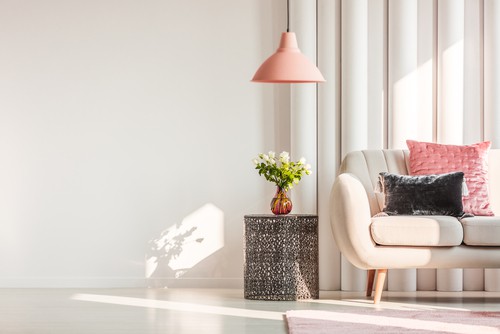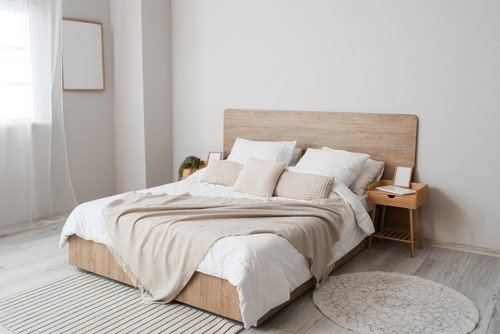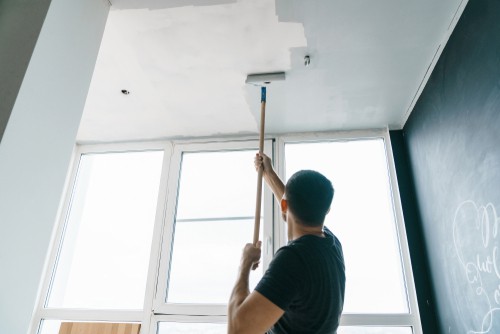
Paint Colors that Complement Natural Light
August 29, 2023
Incorporating Pastel Paint Colors in Home Decor
November 6, 2023Paint Selection for a Modern Minimalist Home
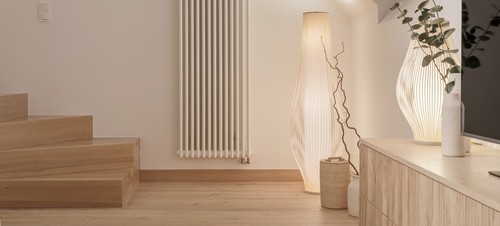
Paint Selection for a Modern Minimalist Home
Paint Selection for a Modern Minimalist Home. Every element in modern minimalist home design is pivotal in creating an environment that exudes simplicity and elegance.
Among these elements, paint is a cornerstone, wielding the power to transform spaces, set moods, and define aesthetics.
This comprehensive guide explores the nuances of paint selection within the context of a modern minimalist home.
We delve into the principles of minimalist design, the psychology of color, and practical considerations to help you make informed choices that resonate with your minimalist vision.
Understanding Modern Minimalism
Modern minimalism is a design philosophy that champions simplicity, functionality, and clean lines. At its core, it seeks to eliminate the superfluous, focusing on what truly matters. This approach extends to every aspect of interior design, making it an ideal match for contemporary living.
Minimalist interiors are marked by uncluttered spaces devoid of unnecessary ornamentation. Functionality reigns supreme, with each piece of furniture and every design element serving a purpose. Clean lines create a sense of order and tranquility.
Paint is a dynamic tool in the minimalist designer’s arsenal. It acts as a canvas, allowing you to craft spaces that radiate serenity and purpose. The careful selection of paint colors, finishes, and techniques can either enhance or detract from the minimalist aesthetic.
Color Psychology in Minimalist Design
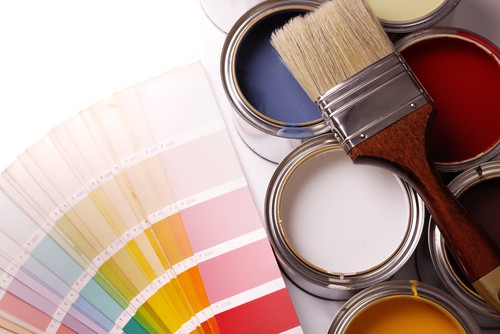
Colors evoke emotions and influence our perception of spaces. Understanding the psychology of color is essential in crafting minimalist environments that resonate with your desired mood and atmosphere.
How can color choices influence mood and perception?
Warm colors like soft beige and muted earth tones evoke coziness and relaxation, while cool shades such as light gray and pale blue promote a sense of calm and clarity. Choosing the right palette can help you achieve your desired ambiance.
The importance of selecting the right paint colors
In minimalist design, every color choice should be deliberate. The goal is maintaining harmony while allowing the chosen color palette to elevate the overall design.
Neutral Color Palette
Neutrals, such as various shades of white, gray, and beige, are the bedrock of minimalist interiors. Their timeless appeal creates a serene canvas for your design vision.
The spectrum of neutrals offers a myriad of possibilities. From crisp white that embodies purity to soft gray that exudes sophistication, selecting the right shade is essential.
Neutral colors promote tranquility and provide a timeless backdrop that adapts to changing trends. They allow other design elements to shine while maintaining a sense of balance.
Bold Accents and Contrast
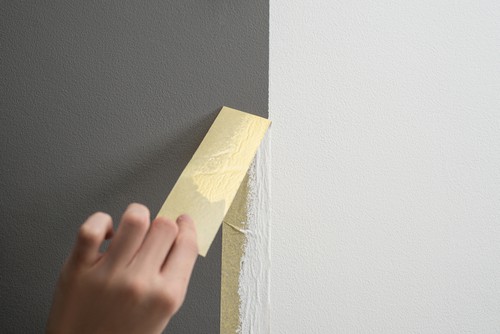
Incorporating small pops of color in a minimalist space
While minimalism celebrates restraint, small touches of color can infuse personality and vibrancy into your space. Think of accent walls or carefully selected furniture pieces as opportunities to introduce contrast.
Selecting accent walls or furniture for a focal point
In a sea of neutrality, strategically placed accents draw the eye and serve as focal points. These accents can be powerful statements within a minimalist context.
Maintaining balance and harmony in design
The key to successful contrast lies in maintaining balance. Bold accents should enhance the overall design without overwhelming the space’s simplicity.
Paint Finish Options
Different paint finishes
- Matte
- Satin
- Gloss
Paint finishes play a crucial role in the look and feel of your space. Each finish offers a distinct texture and sheen that can impact the minimalist aesthetic.
Choosing the appropriate finish for various surfaces
Consider the functions of different areas in your home when selecting paint finishes. Matte finishes often work well for walls, providing a non-reflective, clean look.
Matte finishes for a clean and non-reflective look
Matte finishes are popular in minimalist design because they impart a flat, velvety texture. They create an understated elegance that complements clean lines.
Lighting Considerations
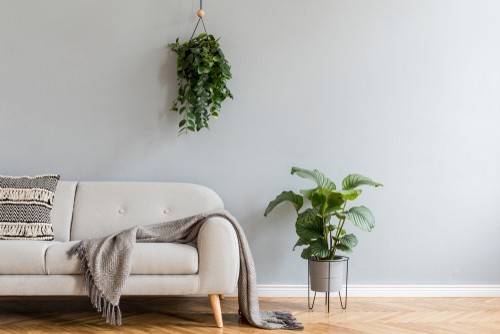
How lighting affects paint color perception
Lighting is a critical component in paint color perception. Natural and artificial light sources can alter how colors appear in your space.
The role of natural and artificial light in minimalist spaces
Minimalist interiors often feature ample natural light, but artificial lighting is equally important. Consider the interplay between light and paint when designing your space.
Selecting paint colors under different lighting conditions
Test paint colors under various lighting conditions to align with your vision. A soothing color in natural light may evoke a different mood in artificial illumination.
Painting Techniques for Texture
Creating depth and texture with paint techniques
Minimalist design doesn’t equate to flatness. Paint techniques like color blocking, stripes, and ombre can introduce subtle texture and depth.
Examples of techniques like color blocking, stripes, and ombre
Color blocking involves contrasting sections of a wall with different colors, creating visual interest. Stripes can elongate or widen spaces, while ombre techniques introduce a graceful gradient effect.
Minimalist-friendly textured finishes
Textured finishes in minimalist spaces should be subtle. Consider minimalistic textures like fine stucco or brushed finishes that enhance rather than overwhelm.
Painting Furniture and Built-Ins
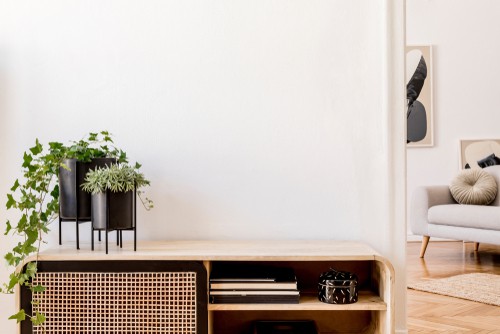
A cohesive minimalist design extends beyond walls. Furniture and built-ins should seamlessly integrate with the overall aesthetic.
Paint as a tool for integrating furniture seamlessly into the design
Painting furniture in complementary colors can tie the entire space together. Built-ins, such as cabinets and shelves, should blend harmoniously with the surrounding walls.
Tips for painting cabinets, shelves, and other interior features
Achieving a flawless finish on furniture and built-ins requires attention to detail. Proper surface preparation and paint can transform these elements into minimalist gems.
Harmony with Minimalist Decor
Coordinating paint colors with minimalist decor items
Minimalist decor, including furnishings, artwork, and textiles, is crucial in achieving harmony. The chosen paint colors should complement these elements seamlessly.
The role of furnishings, artwork, and textiles in complementing paint choices
Furnishings should be functional yet visually appealing. Artwork can introduce subtle color or serve as a focal point. Textiles, such as curtains and rugs, should enhance the overall aesthetic.
Achieving a cohesive and harmonious look
A minimalist space should feel cohesive and harmonious. Every design element should work in concert to create an atmosphere of serenity and purpose.
Sustainability and Eco-Friendly Paints
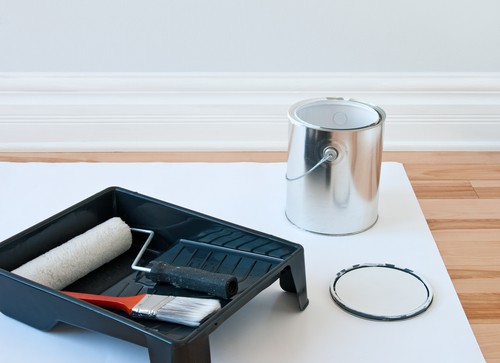
The importance of eco-conscious paint choices
In a world increasingly focused on sustainability, paint choices are no exception. Eco-friendly paints, such as those with low-VOC (volatile organic compounds) formulations, align with minimalist values.
Exploring low-VOC and non-toxic paint options
Low-VOC and non-toxic paints benefit both the environment and your health. They release fewer harmful chemicals into the air and are suitable for minimalist homes that prioritize well-being.
Environmental benefits and health considerations
Eco-friendly paints contribute to healthier indoor air quality, making them ideal for minimalist spaces where clean and pure environments are paramount.
Paint Maintenance in a Minimalist Home
Minimalist interiors demand high maintenance to preserve their clean and uncluttered appearance. Regular cleaning and care are essential.
Dust and dirt can mar the minimalist aesthetic. Establish a cleaning routine and keep touch-up paint on hand for quick fixes.
High-quality paint and proper maintenance can extend the lifespan of your paintwork. Invest in the longevity of your design choices.
Budget Considerations
Budget constraints are a reality, but they need not compromise quality. Striking the right balance between quality and cost is key to a successful minimalist design.
Consider allocating more of your budget to high-impact areas, such as living spaces. You can make budget-friendly paint choices in less critical areas without sacrificing quality.
Quality paint not only looks better but also lasts longer. Investing in premium paint is an investment in your minimalist design’s long-term value and durability.
Professional vs. DIY Painting
The advantages of hiring professionals for a flawless finish
Professional painters bring expertise and precision to your project. They ensure clean lines and a polished finish that aligns with the demands of minimalist design.
DIY painting considerations for experienced homeowners
Experienced homeowners with a flair for DIY can tackle painting projects with confidence. However, even DIYers should recognize when to seek professional help for challenging tasks.
Ensuring clean lines and precision in minimalist design
Minimalism thrives on clean lines and precision. Whether you choose professionals or opt for DIY, achieving a flawless finish is paramount.
Paint Selection for a Modern Minimalist Home – Conclusion
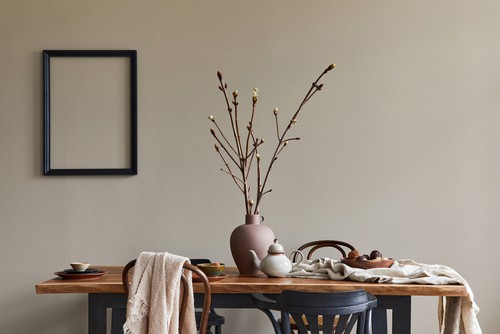
In modern minimalist design, paint selection is a powerful tool for crafting spaces that resonate with simplicity and elegance.
This guide has explored the principles of minimalism, the psychology of color, and practical considerations for choosing the right paint for your minimalist home.
By applying these insights, you can create an environment that embodies the essence of modern minimalism, where every element serves a purpose and clean lines reign supreme. Your minimalist vision awaits, one paint stroke at a time!
Are you seeking professional and reliable painting services in Singapore? Contact us today!

